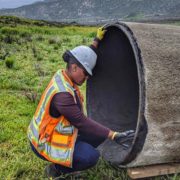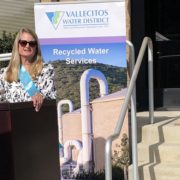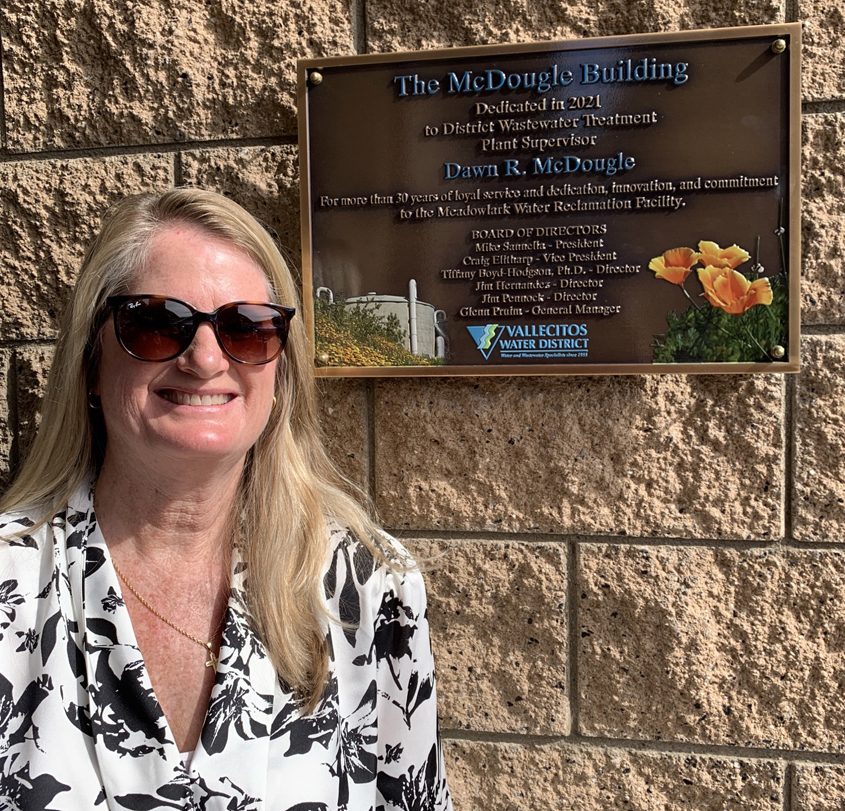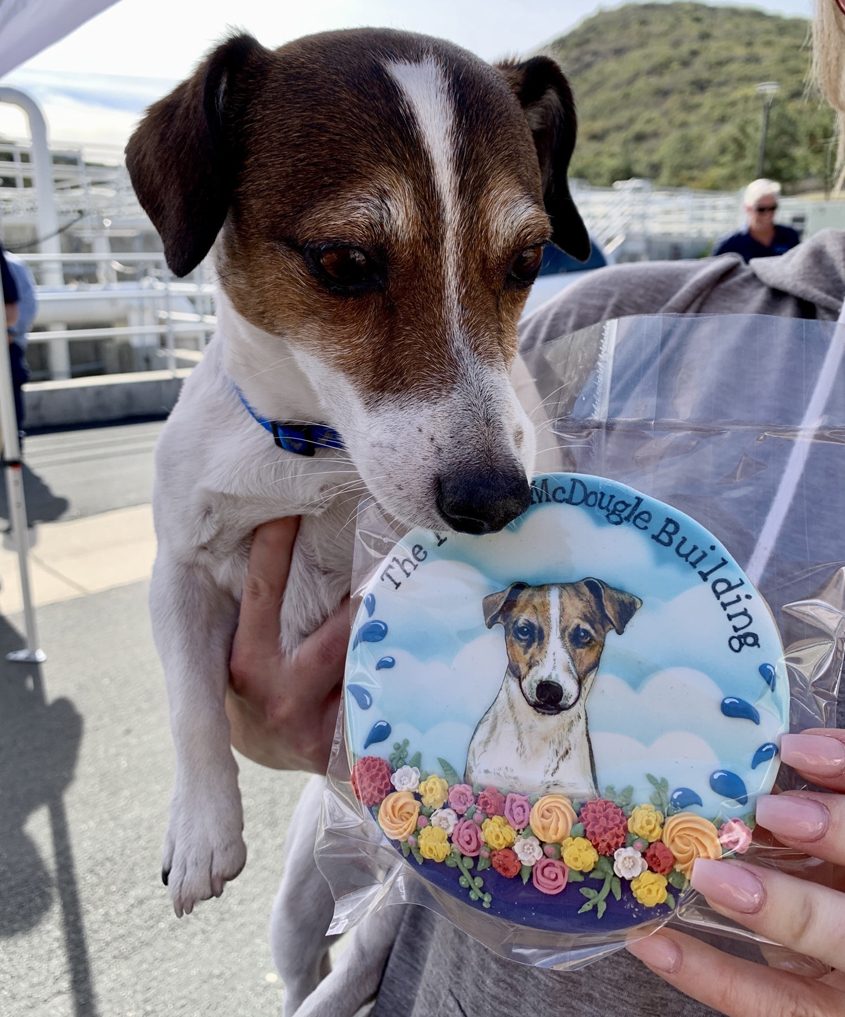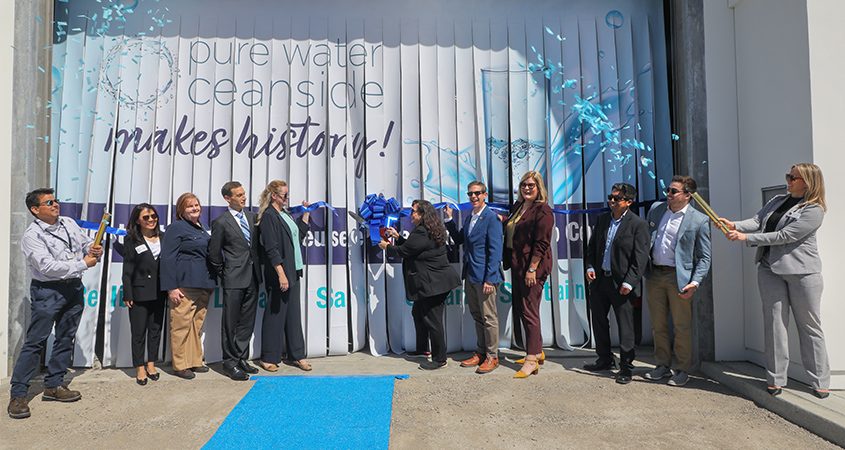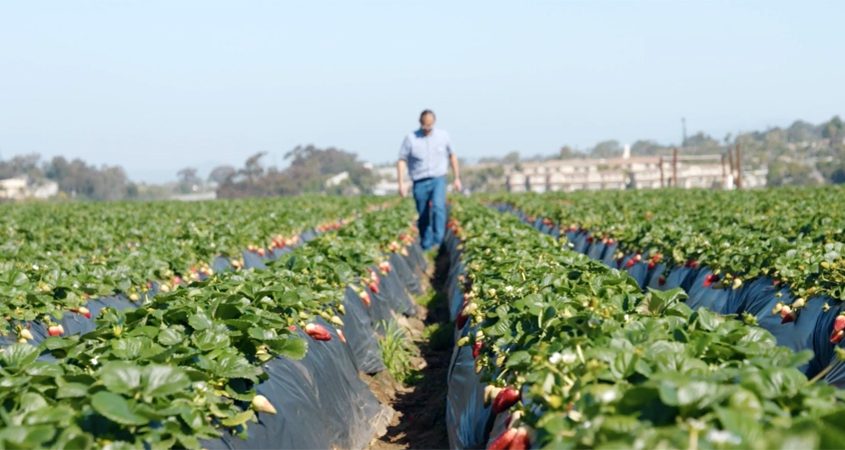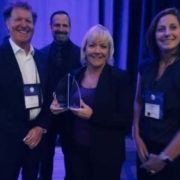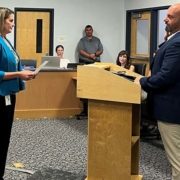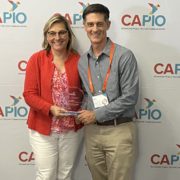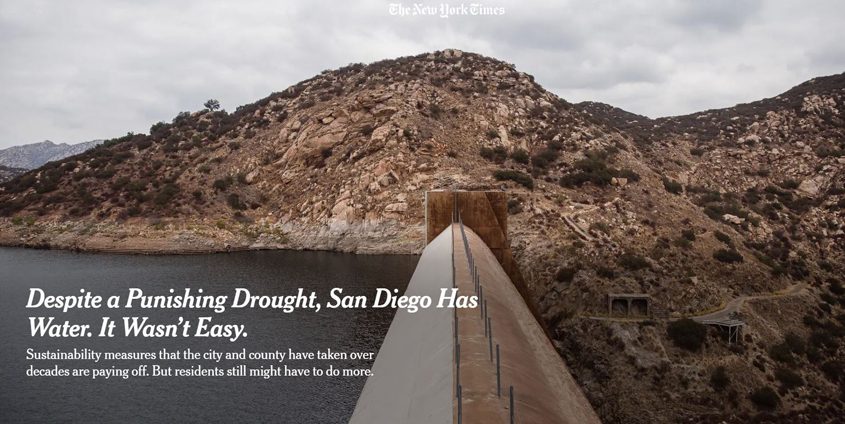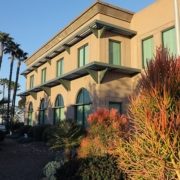Celebrating 79 Years of Engineering at the San Diego County Water Authority
The San Diego County Water Authority is celebrating National Engineers Week by highlighting how the agency’s engineers are instrumental in keeping the water flowing to San Diegans.
Since the Water Authority’s formation in 1944, engineers have played a pivotal role in the establishment and growth of the agency and its commitment to delivering safe, reliable water supplies to San Diego.
The Water Authority’s first general manager, J. L. Burkholder, who oversaw the completion of Pipeline 1, which gave San Diego access to the Colorado River in 1947, also held the title of chief engineer. At the Water Authority, National Engineers Week is a time to remember its roots while also appreciating the team leading it into the future.
“Preparing the next generation”
Water Authority Assistant General Manager Tish Berge, who is a registered professional chemical engineer, explained the importance of having a strong presence of engineers in organizations like the Water Authority.
“Engineering at its core is problem solving,” Berge said. “That type of thinking is applicable at all levels within an organization. At this stage in my career, the most rewarding aspect of my job is leading talented individuals and preparing the next generation.”
The Water Authority has 23 staff members that hold professional engineering or engineering-in-training licenses.
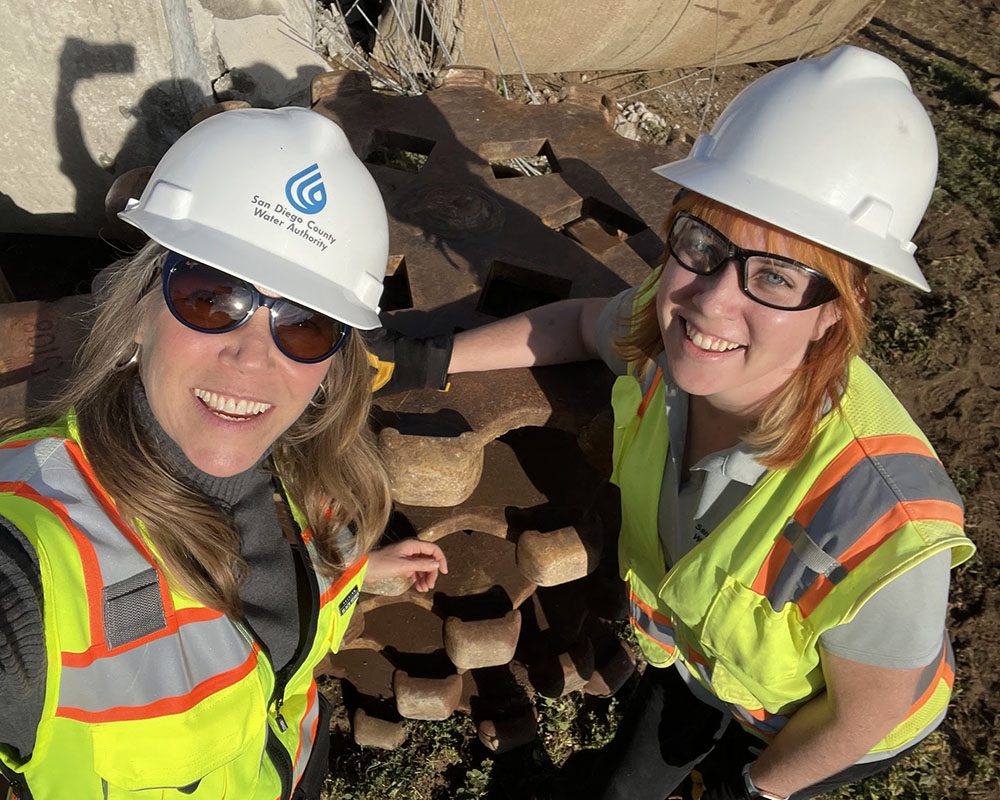
(L) San Diego County Water Authority Assistant General Manager Tish Berge, a registered professional chemical engineer, and (R) Emma Ward-McNally, engineer and construction manager at the Water Authority. Photo: San Diego County Water Authority
Love of science
Emma Ward-McNally, engineer and construction manager at the Water Authority, said her love for science and curiosity of the world around her drew her into the field of engineering. She said her passion for problem solving keeps her going.
“I love my job because no two projects are ever the same and they all offer unique challenges and opportunities,” Ward-McNally said.
Asset Management – Underground
At the Water Authority, problem solving can look a little different than other retail water agencies, said Principal Asset Management Specialist Eric Rubalcava, who is a professional engineer.
Large diameter pipelines and structures allow for Rubalcava and his team to physically go inside the infrastructure for inspections. A typical inspection over the course of 10 days will cover 12 miles of pipeline. Rubalcava and his crew look for visible cracking of the pipeline liner, exposed or corroded metal, coating failures, spalled concrete, pulled joints; anything that provides evidence that our infrastructure is in a degraded state.
For Rubalcava, the job is rewarding because of his direct involvement in keeping the water system reliable by determining infrastructure needs.
“This work is physically demanding but I get to do something that most people don’t get to experience, including many of my Water Authority colleagues,” Rubalcava said.
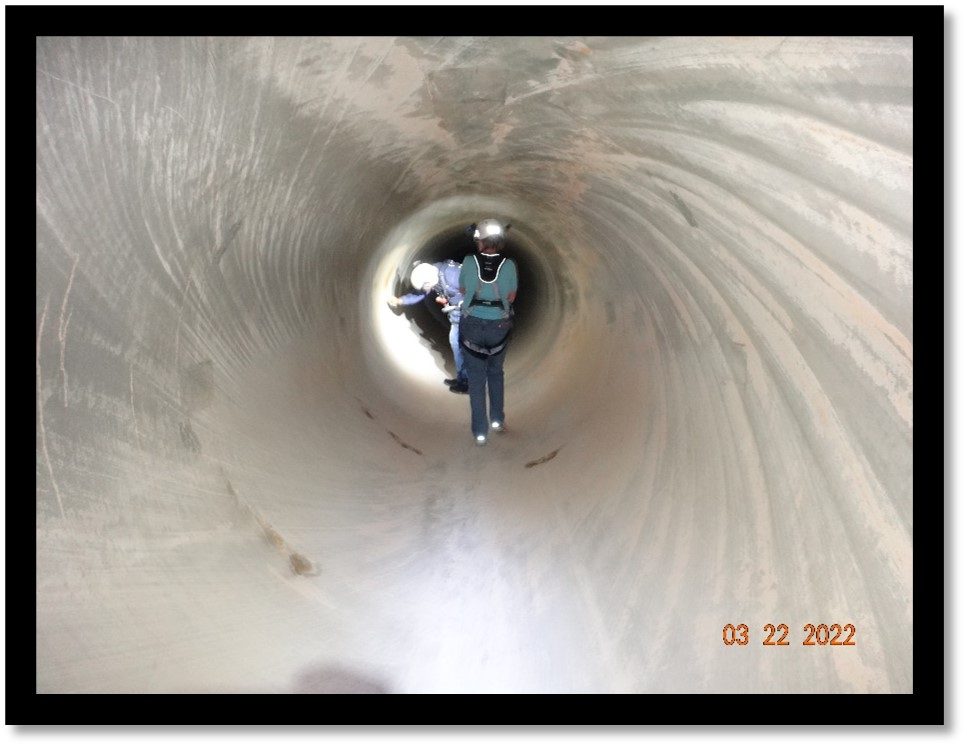
Water Authority Principal Asset Management Specialist Eric Rubalcava performing an internal inspection of Pipeline 4EII in South San Diego County. Photo: San Diego County Water Authority
Field work – Above ground
Senior Engineering Technician Karla Sanchez spends her time out in the field above ground. One of her main roles is maintaining a presence at construction sites where she ensures that projects are meeting contract specifications.
“One of the favorite parts of my job is being out in the field monitoring construction and working with various talented individuals in the water industry,” Sanchez said.
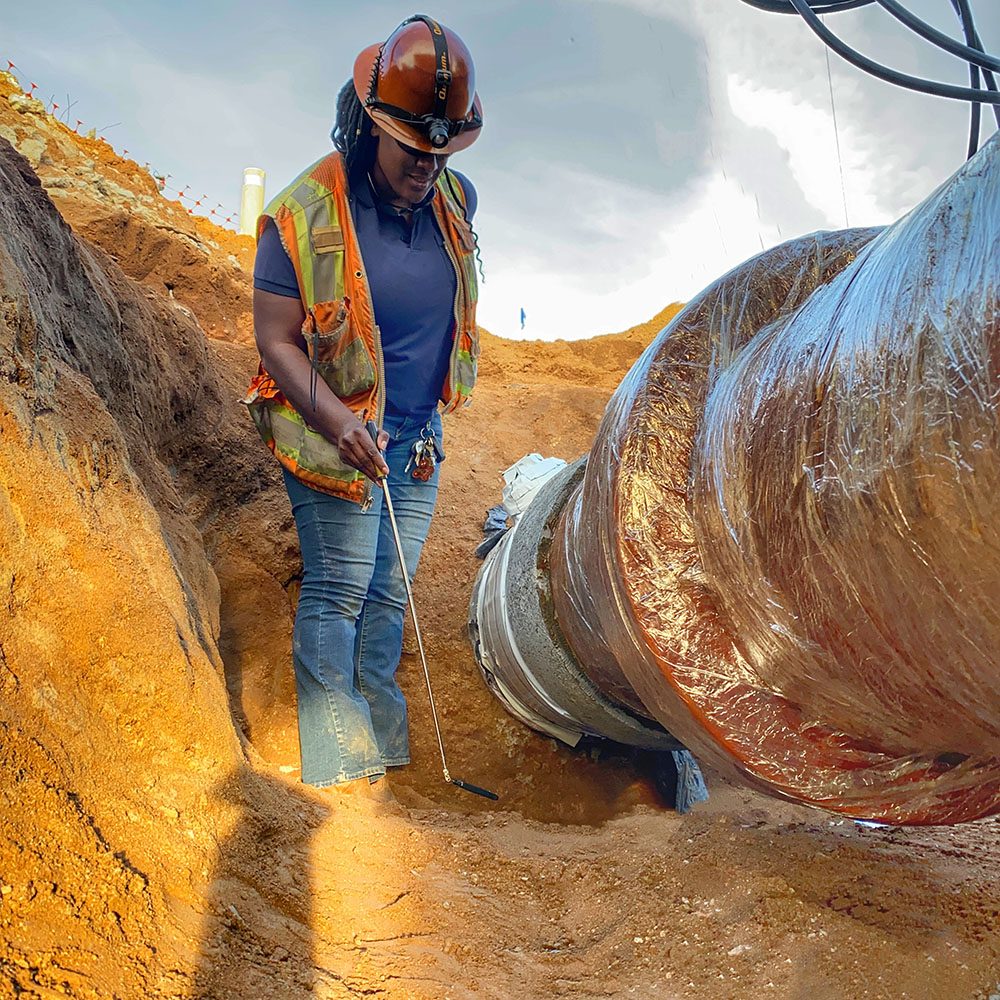
Water Authority Senior Engineering Technician Karla Sanchez. Photo: San Diego County Water Authority
Data analysis, problem solving = solutions
When engineers aren’t out in the field, Senior Water Resources Specialist Anjuli Corcovelos said a typical day on the job includes data analysis, communication, and solving problems.
All this comes together when presented with projects like the Moosa Canyon Pipeline Repair and Replacement Planning Study. Corcovelos and her team had to determine which of the eight possible solutions would be best. The project involved coordination with several other departments as part of a massive team effort. It’s the type of project Corcovelos finds the most satisfying.
“Those challenges, those stressful days or nights trying to really figure out that solution, come together sometimes with other teammates to make that happen,” said Corcovelos. “But ultimately when you achieve that goal, and you identify what that solution is and be able to see those effects come to light, it really truly is very rewarding.”
Master Plan – The Future
Leading up to National Engineers Week, engineers across multiple departments at the Water Authority have been looking ahead together at what the future holds for engineering projects which will positively impact San Diego’s water supply.
Sami Sweis, professional engineer (PE) in Water Resources, is working with Corcovelos along with other departments and water agencies on his current favorite project: The 2023 Water Facilities Master Plan Study. The master plan goes all the way out to 2045 by evaluating existing and planning for new regional water facilities. The overall goal is to keep the water supply reliable and diverse while also maintaining or increasing operational resiliency and reliability.
“It’s really enjoyable because of the collaboration we have with our other departments and member agencies, and knowing that in the future we’re going to have some projects that are going to be beneficial to San Diego as a region,” Sweis said.
(Editor’s Note: Founded by the National Society of Professional Engineers, National Engineers Week (February 19–25, 2023) is dedicated to ensuring a diverse and well-educated future engineering workforce by increasing understanding of and interest in engineering and technology careers.)

